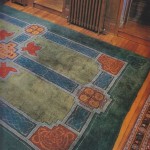Best Colour Combination For Home Interior Walls
Choosing the right colour combinations for interior walls can significantly impact the overall aesthetic and feel of a home. Colour has the power to influence mood, create illusions of space, and highlight architectural features. A well-considered colour palette can transform a house into a welcoming and stylish home. This article explores various colour combinations, offering guidance for creating harmonious and visually appealing interiors.
Understanding Colour Theory Basics
Before diving into specific colour combinations, understanding basic colour theory principles is helpful. The colour wheel provides a visual representation of colour relationships. It illustrates how colours interact with each other, informing choices for creating complementary, analogous, or triadic colour schemes. Complementary colours sit opposite each other on the wheel (e.g., blue and orange), offering vibrant contrast. Analogous colours are adjacent on the wheel (e.g., blue, blue-green, and green), creating a harmonious and calming effect. Triadic colour schemes use three colours evenly spaced on the wheel (e.g., red, yellow, and blue), providing a balanced and energetic feel.
Understanding undertones is also crucial. Undertones are the subtle hues that lie beneath the surface colour. They can be warm (yellow, orange, red) or cool (blue, green, purple). Identifying undertones ensures colours work harmoniously, even within the same colour family. For example, two shades of grey might appear to clash if one has a warm undertone and the other a cool one.
Creating a Cohesive Colour Flow
Maintaining a cohesive colour flow throughout the home creates a sense of unity and balance. This doesn't necessarily mean using the same colours in every room, but rather ensuring a consistent thread connects the spaces. This can be achieved through the use of a common neutral throughout the house, such as a specific shade of white or grey for trim and doors, while varying wall colours within each room. Alternatively, a key accent colour can be woven throughout different areas, appearing in accessories, artwork, or furniture in varying intensities. This creates a subtle visual link, tying the spaces together harmoniously.
Popular Colour Combinations for Different Spaces
Specific colour combinations lend themselves well to particular rooms, influencing the atmosphere and functionality of the space. For example, in bedrooms, softer, more calming colours like blues, greens, or muted lavenders promote relaxation and restful sleep. Living rooms, which are often social hubs, can benefit from warmer, more inviting shades like creams, beiges, or soft yellows. These colours create a welcoming and comfortable environment for gatherings. Kitchens and dining areas can be energized with brighter, more stimulating colours like oranges, yellows, or vibrant greens. These hues can stimulate appetite and conversation.
The size and lighting of a room also play a crucial role in colour choice. In smaller spaces, lighter colours can create the illusion of spaciousness, while darker colours can make a room feel smaller and more intimate. Natural light influences how colours appear. North-facing rooms may benefit from warmer tones to compensate for the cooler light, while south-facing rooms can handle cooler colours without feeling too chilly.
Considering Personal Preferences and Lifestyle
Ultimately, the best colour combination for a home is one that reflects the personal preferences and lifestyle of its occupants. While general guidelines and colour theory principles offer helpful starting points, individual tastes should be the driving force behind colour choices. Consider what moods and atmospheres individuals want to create in each space. Are they drawn to vibrant and energetic colours, or do they prefer calming and neutral palettes? Thinking about how the spaces will be used is also important. A home office might benefit from colours that promote focus and concentration, while a family room might require a more durable and easy-to-clean finish.
Testing and Sampling
Before committing to a colour, testing and sampling are crucial. Paint colours can appear differently on walls than they do on small colour chips. Painting large swatches on the walls in the intended room allows individuals to see how the colours look in different lighting conditions throughout the day. This step helps avoid costly mistakes and ensures satisfaction with the final result. Consider the impact of both natural and artificial light on the chosen colours. Observe how the colours change in the morning, afternoon, and evening, and under different lighting fixtures.
The Impact of Finishes
The finish of the paint also plays a role in the overall effect. Matte finishes absorb light and can create a more calming atmosphere, while gloss finishes reflect light and can make a space feel more vibrant and energetic. Different finishes also have different levels of durability and cleanability. High-gloss finishes are generally easier to clean, making them suitable for high-traffic areas like kitchens and bathrooms. Matte finishes, while less durable, can help to hide imperfections on wall surfaces.

10 Best Interior Wall Colour Combinations To Try In 2025

25 Wall Colour Combinations For A Living Room Makeover Livspace

Modern Wall Colour Combination Ideas For Living Room

20 Best Room Color Combinations Eye Catching Palettes For Your Home

How To Choose The Best Color Combination For Interiors

Modern Wall Colour Combination Ideas For Living Room

The 5 Best Interior Paint Colors For Feeling Refreshed And Relaxed Metzler Home Builders

Best 2 Colour Combination Ideas For Bedroom Walls Indigo Paints

Exciting Interior Color Combination Inspirations Designcafe

Transform Your Home With Inspiring Colour Combinations Asian Paints
Related Posts








